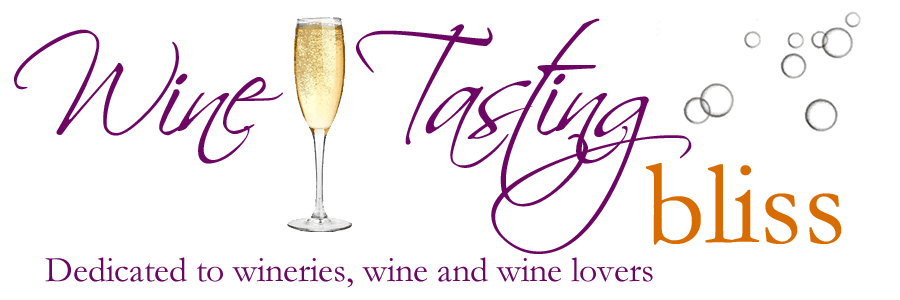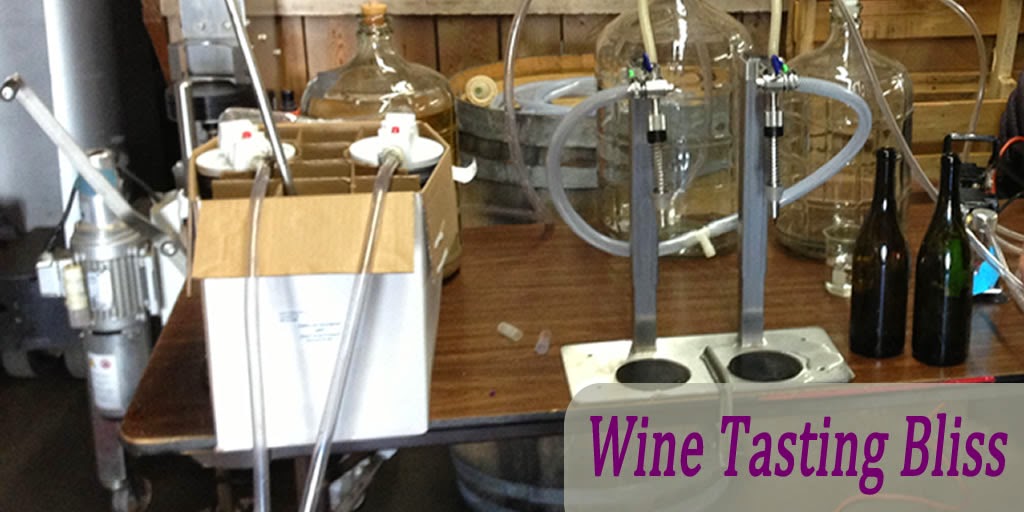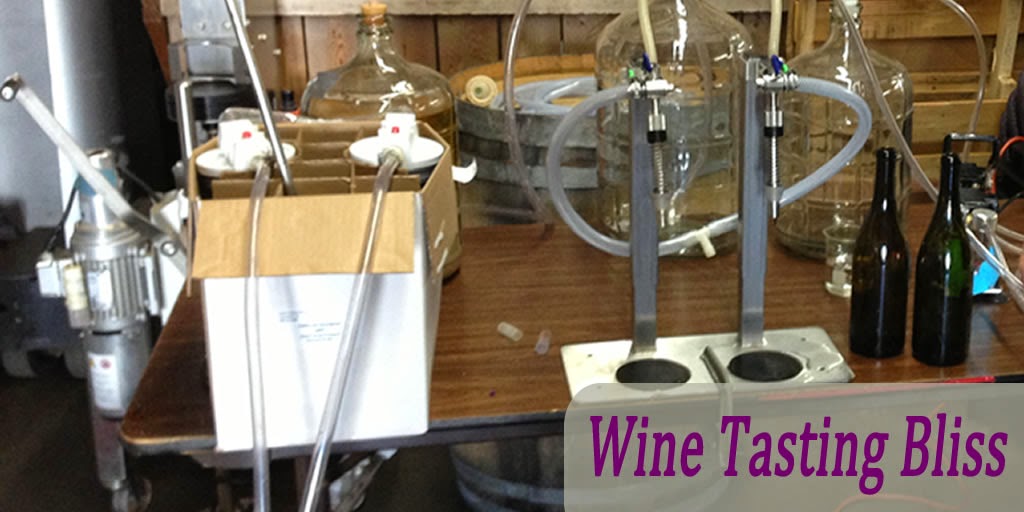We adore the lovely labels and creative cork seals that accompany many wine bottles. Some wine bottles are elevated to true art. Consider the bottles at Steven Kent, Ruby Hill, John Evan and Darcie Kent (just to name a few local examples). The artistry that creates the wine extends to the bottle that contains it. Why then are we so entranced by “bottle your own” events, where the labels are few and the labor is personal?
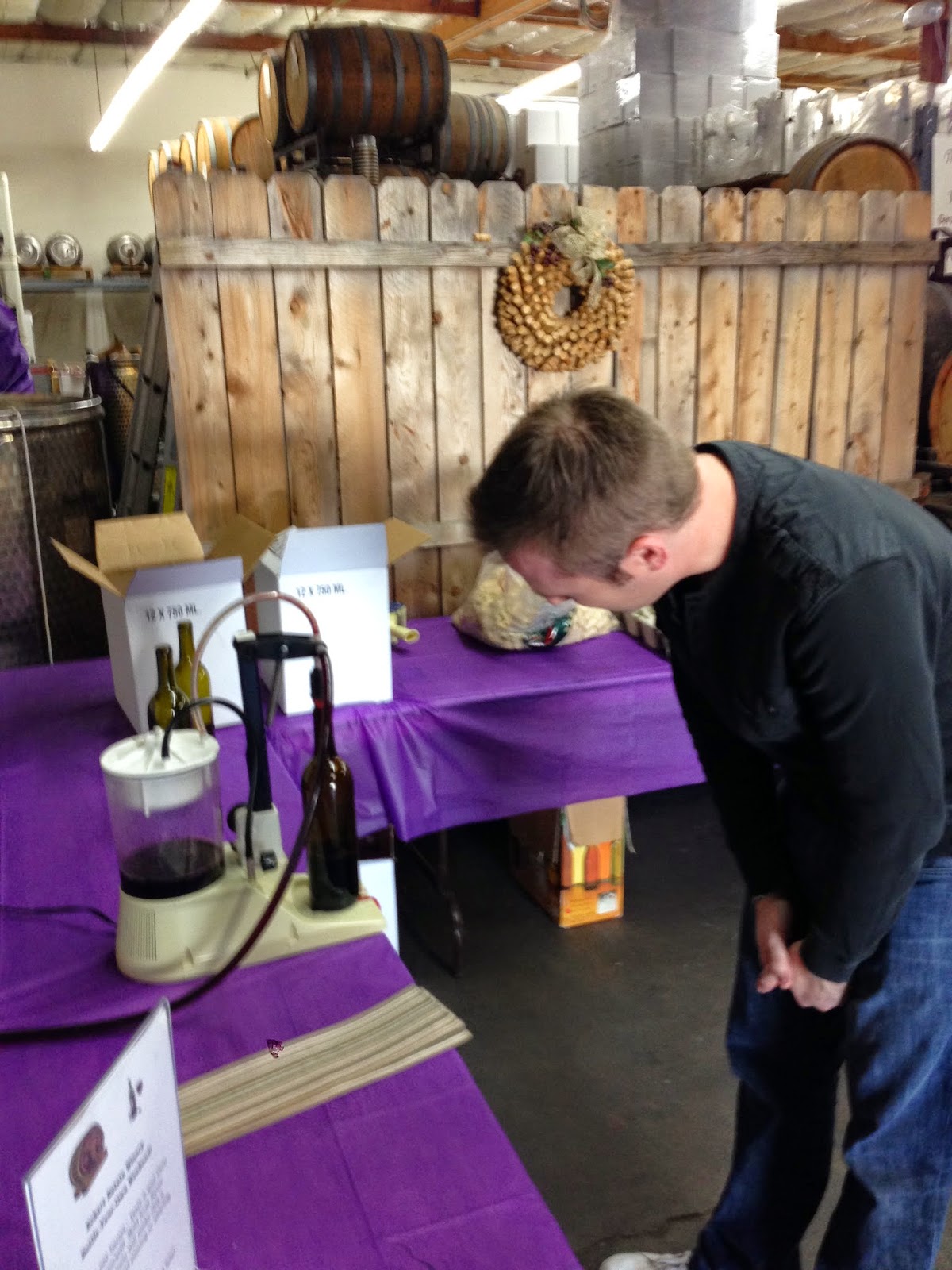 |
| Filling the Bottle |
We love, love, love bottle your own events. We’ve done it several times at Eckert Estates Winery and once at Page Mill Winery. In every case we’ve experienced, we have had a great time and brought home amazing wine. The bottling activity is actually easier than we initially feared, with most of the scary work done by automation, leaving only the fun parts for our manual participation.
Step one: filling the bottle. In most cases, the winery will provide an automatic filling machine, so there’s no fear of overflowing wine onto the table and possibly the shoes. Working much like the gas pump filling a car’s tank, the flow is stopped at exactly the right moment. The shoes are safe!
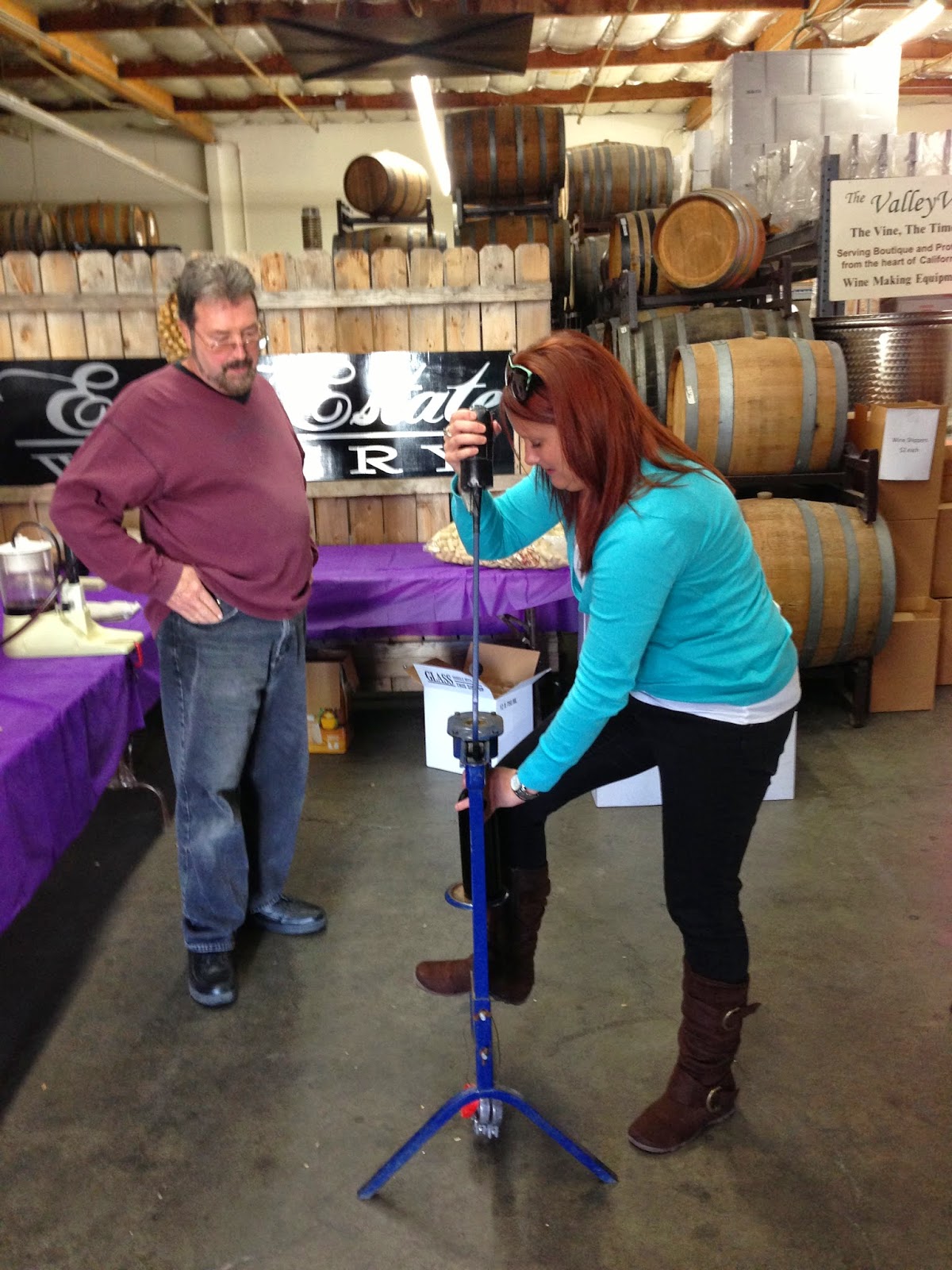 |
| Corking Fun! |
Once filled, the bottle needs a cork. That’s when the audience participation comes to the forefront. Most wineries use a device that looks a lot like a farm-house well pump. A cork is placed in the top and the bottle nestles below the spout. The “pump handle” is swung (this is a lot more fun than pumping water) which causes the cork to be squeezed from all sides and rammed into the bottle’s neck. It sounds more complicated than it is, with the device doing all the hard work. Boom! You’ve just corked your first wine bottle. Congratulations!
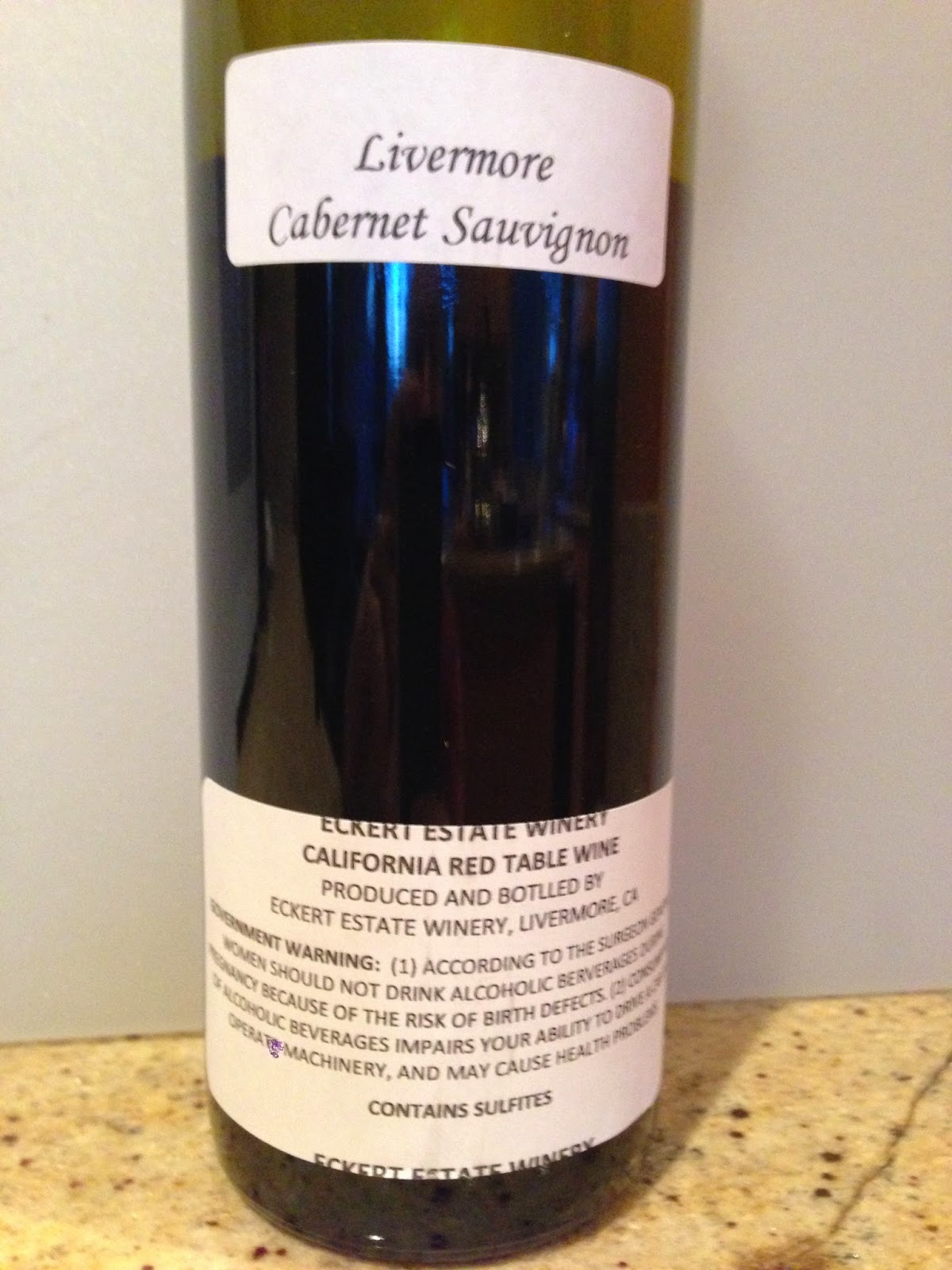 |
| Labels Applied: Check! |
Now comes the boring part: making the government bureaucrats happy. By law, all wine must bear labels describing the contents and the scary warnings about the evils of drinking alcohol. Happily, these labels are pre-printed and don’t take much time to apply. Don’t worry, there’s still plenty of bottle real estate for the custom label that you will undoubtedly spend hours (and $20 in printer ink) developing once you get home. We have created celebratory labels for graduations and special events. Give it a try, just set a timer before you dive in, or you will lose the rest of your day.
This hand-crafted bottle of wine has some special “care and handling” considerations. Have you heard of “bottle shock”? This is a temporary situation that is caused by agitating the wine as it is pumped into the bottle. Shocked wine had muddy flavors and really doesn’t represent the true quality of the wine that will emerge. The cure is easy: just leave the bottle alone for a while once you get it home. Many wineries hold their wine for six months after bottling to avoid exposing their customers to bottle shock. In my experience, a few weeks is plenty of time to avoid the shock. With our uncanny knack for buying wine faster than we can drink, this isn’t really much of a problem.
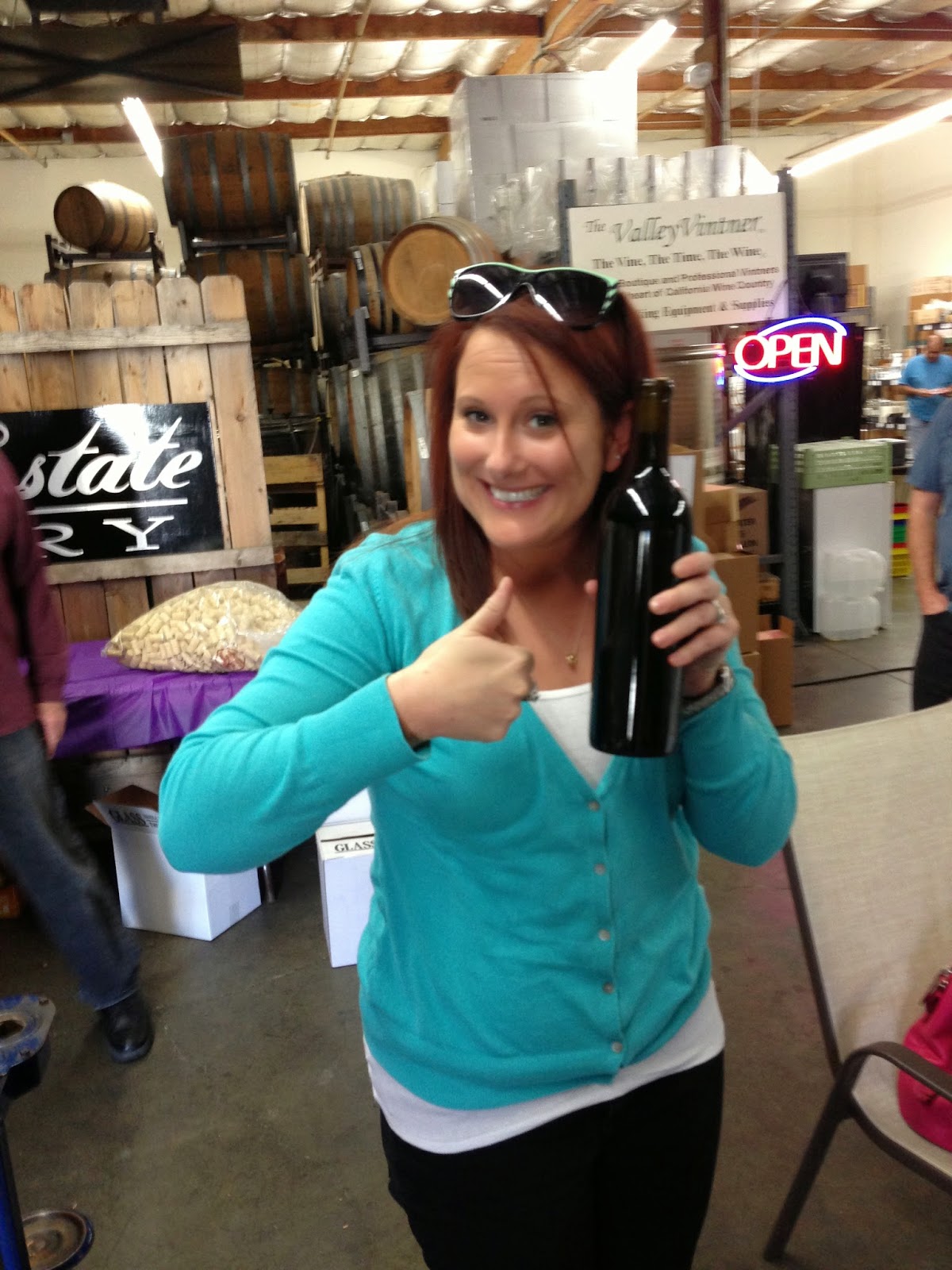 |
| Success! |
Another consideration with BYO wine is the optimum lifespan for the wine. In many cases, the wine has not gone through the final finishing processes that bottled wine enjoys. That means that BYO wine should be enjoyed relatively quickly. Our rule of thumb is to open BYO wine within six months or so. That takes some concentration, but the rewards are plentiful.
So next time you see a BYO opportunity at a winery, give it a try. Good wine, good fun and a good value! You won’t be disappointed.
Cheers!
About the Author: John grills a mean steak and is always in the market for another wine fridge. Believes that if a winery has more than 10 employees, it's probably too big. Buys wine faster than he drinks it, but who cares?
